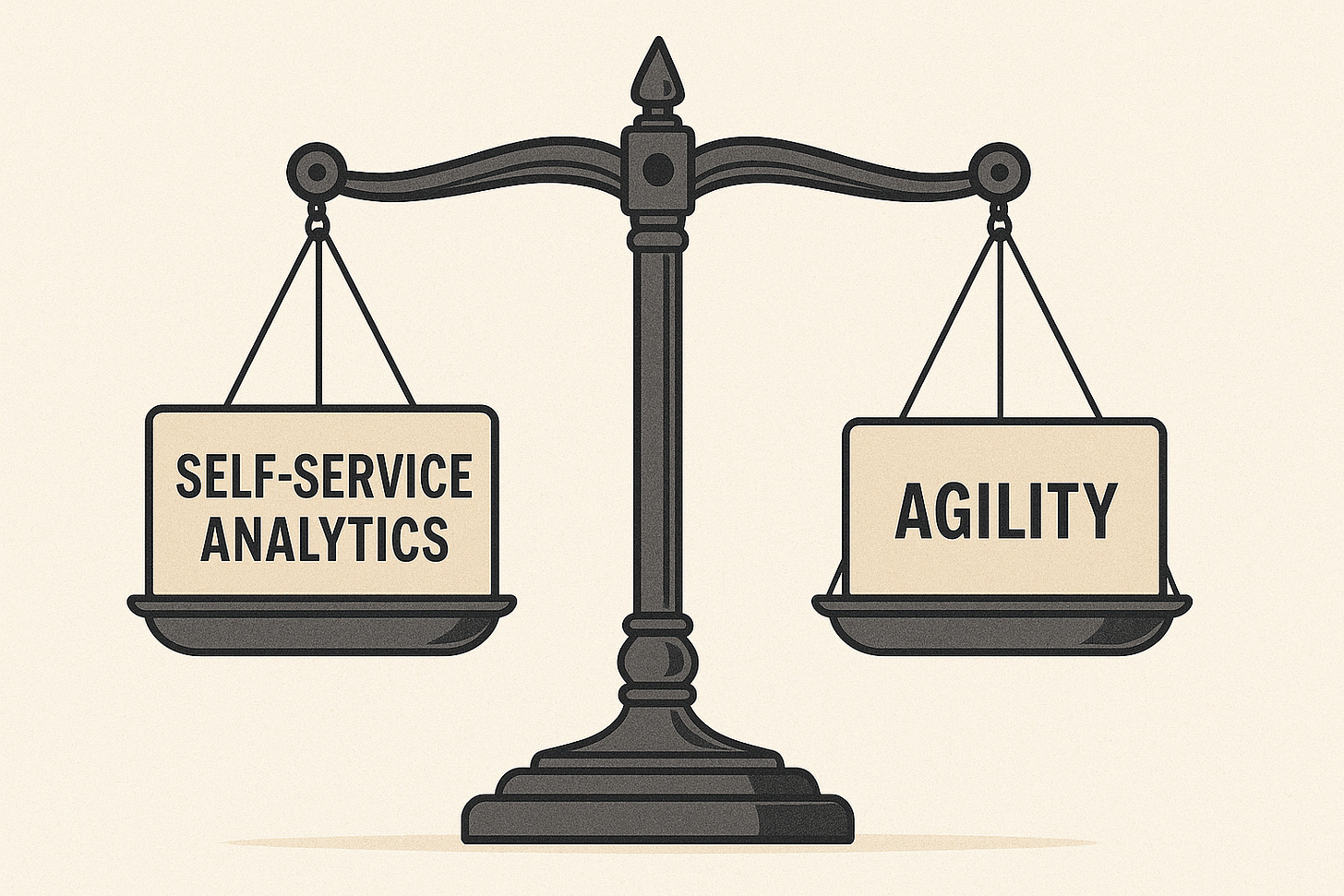Self-Service Isn’t a Strategy. It’s a Bet.
How we built a flexible data platform without falling into the “set-it-and-forget-it” trap.
When I joined my current company, we had maybe 30 people in tech.
Small enough that most teams still knew what each other were doing.
Small enough that spreadsheets still solved half our problems.
So of course, I decided to build a self-service data platform.
It wasn’t an obvious move.
People usually wait until pain becomes intolerable. Until the data team is swamped, dashboards are breaking, and nobody trusts the numbers. That’s when self-service feels justified.
I didn’t wait.
Not because I wanted to future-proof everything. Not because I love semantic layers.
But because I knew that if we didn’t start early, we’d bake in bottlenecks that would cost us 10x later.
The Vision: Data Without a Middleman
The idea was simple.
Product teams should be able to onboard their own data, calculate metrics, and build dashboards without depending on us for every step.
That meant rethinking the data team’s role.
Not support. Not dashboard monkeys.
But enablers. Builders of a platform that others could use.
We shifted toward that mindset early. And it’s already paying off.
But as with anything ambitious, reality had other plans.
Where Theory Breaks Down
Self-service sounds clean in theory.
In practice, it’s a balancing act. And some days, a circus act.
Here’s what we learned.
1. Self-service doesn’t mean stepping away
When the stakes are high, a new product launch, a major strategic shift, you don’t wait for teams to become fluent in your data tooling. You jump in. You work alongside them. You act like a product team.
The platform helps them move fast. Your hands-on support helps them not crash.
2. Context isn’t optional
You can give people the sharpest tools in the world.
But if they don’t understand the data, its lineage, quirks, caveats, they’ll misuse it.
Self-service requires storytelling. Documentation. Slack threads.
Sometimes, it just means sitting down and talking through what a metric actually means.
3. Some things just shouldn’t be self-served
Recurring reports? Go for it.
Prepping metrics for a board meeting with three definitions of 'active user'? Maybe not.
We learned to pick our battles.
Not everything needs to be democratized. And that’s okay.
So What Does “Success” Look Like?
Not perfection. Not purity.
Just adaptability.
A good self-service setup doesn’t remove the data team.
It frees the data team, to focus on deeper problems, build smarter tools, and step in where it actually matters.
Here’s what’s working for us:
Flexible roles. We help when needed, fade into the background when we’re not.
Data literacy, not just access. Teaching teams how to interpret data is more valuable than giving them more dashboards.
Iterating in the open. We update our tools, metrics, and training in response to real needs, not just a roadmap.
The Hard Truth
Self-service is not a checkbox you tick.
It is not a maturity model level.
It is a bet, that with the right scaffolding, people will step up and use data well.
Sometimes they do. Sometimes they need help.
But when it works, it scales better than any dashboard ever could.
If you're navigating a similar transition, I’d love to hear your take. What’s worked in your org? Where did it break down?
(And if you need a laugh, this comic absolutely nails it: Self-Service Analytics Comic – Holistics)

